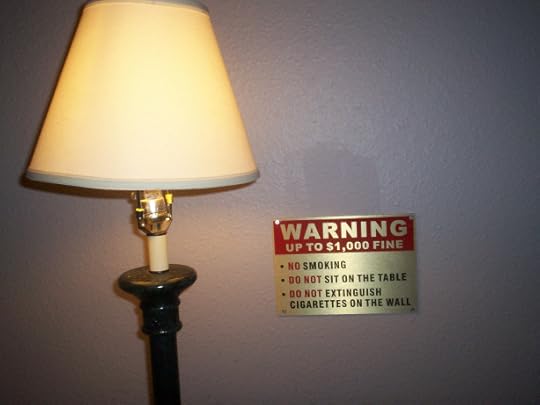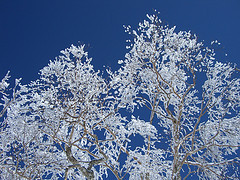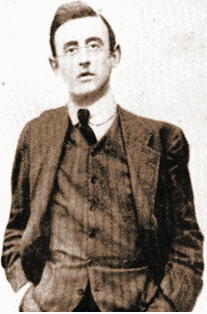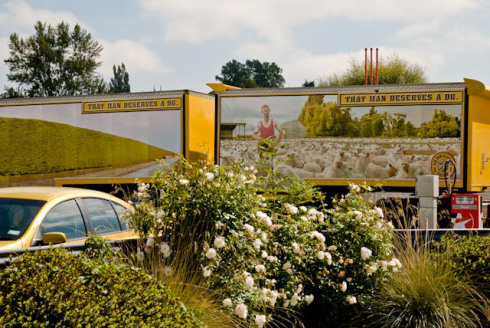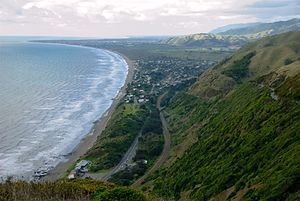Janis Freegard's Blog, page 20
October 16, 2012
Denver Hotel Room
September 10, 2012
Tuesday Poem – Though Frosts Come Down, by Ryokan
Though Frosts Come Down
Though frosts come down
night after night,
what does it matter?
they melt in the morning sun.
Though the snow falls
each passing year,
what does it matter?
with spring days it thaws.
Yet once let them settle
on a man’s head,
fall and pile up,
go on piling up –
then the new year
may come and go,
but never you’ll see them fade away
translated by Burton Watson
Taigu Ryokan(1758-1831) was a Japanese poet in a tradition of radical Zen poets or “great fools”. Ryokan had no disciples and ran no temple, preferring a penniless life as a monk. [Source: http://www.poetseers.org/spiritual-and-devotional-poets/buddhist/ryokan/ryokanp/ryokan/]
You can read more Tuesday poems at the Tuesday Poem hub.
August 13, 2012
Check out the Tuesday Poem Blog
This week I am the guest editor at the Tuesday Poem site where I have posted a poem by the wonderful US poet Aracelis Girmay (it’ll be up just after midnight). Well worth checking out!


August 6, 2012
Tuesday Poem – Easter Rising
This is a poem of mine that was originally published in the wonderful Blackmail Press. I wrote it after a visit to Kilmainham Gaol in Dublin. Joseph Plunkett, one of the Irish rebels who took part in the 1916 rebellion (or “Easter Rising”), was executed hours after marrying his sweetheart, Grace Gifford.
Easter Rising (Joseph Plunkett, 1916), by Janis Freegard
they blindfolded him
our guide explains
for the benefit of the soldiers
(six standing, six kneeling)
so they wouldn’t see his eyes
when they shot him –
a piece of white paper
marking his heart
the day before, he’d married
in Kilmainham Gaol –
the proposal’s on display
You will marry me and no-one else
he’d written to his Grace
I’ve been a blind fool
More Tuesday Poems here


July 23, 2012
Tuesday Poem – Train Window, by Lola Ridge
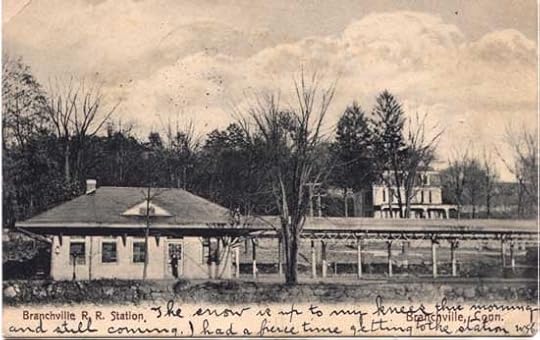
English: Postcard picture of Branchville Railroad Station, Connecticut, USA, ca. 1900 (Photo credit: Wikipedia)
TRAIN WINDOW
Small towns
Crawling out of their green shirts...
Tubercular towns
Coughing a little in the dawn...
And the church...
There is always a church
With its natty spire
And the vestibule--
That's where they whisper:
Tzz-tzz... tzz-tzz... tzz-tzz...
How many codes for a wireless whisper--
And corn flatter than it should be
And those chits of leaves
Gadding with every wind?
Small towns
From Connecticut to Maine:
Tzz-tzz... tzz-tzz...tzz-tzz...
Lola Ridge (Rose Emily Ridge, 1873 – 1941) was an anarchist poet and political activist. She was born in Dublin and lived in Australia and New Zealand before moving to the United States. She was well known in her day as an advocate for immigrants and the working class, as well as for her poetry. She wrote five books of poetry and edited for avant-garde magazines Others and Broom.
http://www.english.illinois.edu/maps/poets/m_r/ridge/bio.htm


July 16, 2012
Te Papa on Monday 23rd; National Poetry Day on Friday 27th
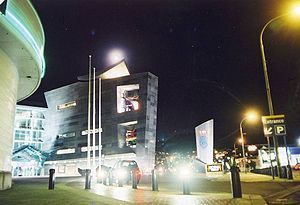
English: Image of the Full Moon rising over Te Papa (Museum of New Zealand) taken by Paul Moss 2002. Camera Pentax ME super, positive transparency. Deutsch: Vollmond über dem neuseeländischen Nationalmuseum Te Papa in Wellington. (Photo credit: Wikipedia)
Next Monday (23rd July 12:15pm), I will be in fine poetic company, reading at Te Papa in a curtain-raiser for National Poetry Day. (OK, the moon won’t be rising in the night sky, but I liked the photo and it was in the public domain). The other poets are Hera Lindsay Bird, Zarah Butcher-McGunnigle, Rob Hack, Dinah Hawken, Anna Jackson, Helen Lehndorf, Kate McKinstry, Bill Manhire, Harvey Molloy, Marty Smith, Ranui Taiapa and Tim Upperton, and we will be reading our Best New Zealand Poems from the 2011 online collection.
The event has previously been advertised as being in the marae at Te Papa, but please note there has a venue change and it will instead be held in the Telstra Clear Centre at Te Papa: go to Level 3, turn left out of the lift and walk over the bridge. Hope to see you there! This part of the IIML’s “Writers on Monday” series, which features many other fine lunchtime events.
Friday 27th, National Poetry Day, will see many other events around the country – NZ Booksellers has a list of what’s on.
So, no poem from me today, but there is always the Best NZ Poems site and of course, the other Tuesday Poems.


July 9, 2012
Tuesday Poem and Interview with Mary Macpherson
Litter
Have you ever used the spare buttons
that come with clothes? Do you save
the safety pins from dry cleaning?
Have you ever used them to hold
your trousers together? Did you use –
a stout chrome pin, or dainty gold?
Do you think your computer is talking
when it gurgles or whirrs? Which would
you rescue, the family pet or your computer?
In foreign cities, how many knobs or handles
have you turned the wrong way?
Do you believe you can do anything?
How do you feel when someone imitates you –
annoyed or flattered? Do you feel guilty
when you imitate someone else?
Could you recite all your usernames
and passwords? Have you ever thought
of them as litter? How often do you choose
‘the name of your first family pet’
as a security question? Will you vanish
if you can’t remember your PIN? Could you
describe a colour without reference
to other colours? Do you panic when faced
with unfamiliar taps? How do you react to cords
that have lost their appliances?
Have you ever tossed an orphaned cord?
How do you deal with complicated devices
with missing manuals? Should you know
everything? If you don’t, does that mean
you’re old? Are you afraid of what’s
underground? How do you feel
when old bottles surface in a garden?
Old rubber balls?
Mary Macpherson
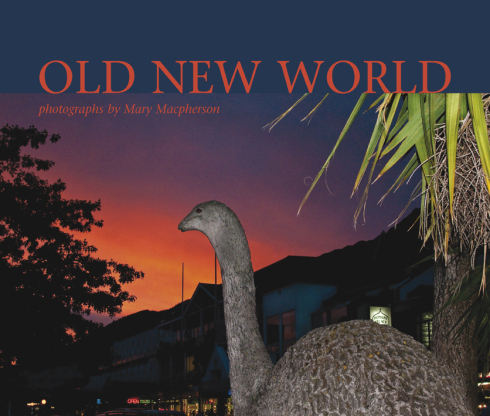
Old New World, photographs by Mary Macpherson
Today’s Tuesday Poem is by Mary Macpherson, a Wellington photographer, poet and communications professional. Mary has just released a stunning new book of photographs, called “Old New World” (Lopdell House Gallery, 2012), which explores the changing face of small town New Zealand. Inside, you’ll find a town clock, a painted tiger, war memorials and an old telephone box, alongside motel chalets and beach subdivisions. As well as posting Mary’s poem, Litter, which was recently published in Hue and Cry, I am very pleased to be interviewing Mary about her book.
Congratulations on making such a beautiful work of art. You’ve had many exhibitions over the years – I remember seeing your “Signs of Texas” exhibition at the Mary Newton Gallery in Wellington, as well as a series involving plastic sharks and lace fabric, and another series of vividly abundant patches of wild flowers and weeds that featured in Landfall. Is “Old New World” a departure from your previous work?
The At Sea series, which featured the shark and lace, were scenarios that I constructed and photographed. That’s a different approach to the documentary style that I used to express the ideas of Old New World.
But all the work I do, whether it’s of constructed images or the ‘real’ world, is exploring ideas and concepts.
Old New World, relates most directly to a series called Urban Landscapes which was exhibited in at City Gallery Wellington in 1987 and again in 2006 with the Signs of Texas work at the Mary Newton Gallery. In Urban Landscapes I was excited about photographing everyday reality with formal precision, to bring out the beauty and strangeness of the vernacular. (A few images from this series are in the BNZ and Te Papa collections).
Old New World is probably a deeper work where I’m exploring a piece of social change that happened during my lifetime, and looking at the way New Zealand is shaping and representing itself.
Did you set out with a theme in mind that you wanted to explore, or did the theme(s) emerge as the book progressed?
The work began in an organic exploratory way. Because of my childhood and teenage holidays in a small Maniototo town in the 50s and 60s, I have a particular memory of the way small towns were in that era, and the society of the time. I also have strong visual and physical memories of the intimate human scale underneath a huge blue sky.
A few years ago I noticed the small places in the Wairarapa were changing – becoming much more branded and conscious of themselves as destinations. Because it affected some sense of myself (childhood memories are particularly potent), I picked up my camera and started photographing in the main streets and back streets. Having done one place, I thought I should check the next place up the line, and the next….
Because I was really interested in the images that were coming back, I decided to do a substantial body of work that covered representative places all over New Zealand. I thought a lot about how to represent the places I was photographing.
I was never going to have intimate knowledge of the hundreds of places I visited, but what I could do was to portray the main trends and possible futures of small towns that I saw. I see the book as an overall fictional small town made up these multiple narratives.
I also become very interested in the way these places were representing themselves and New Zealand history – in murals, advertisements, statues and artworks. I wanted to record these and show how they related to their surroundings.
Old New World” could be viewed as a road trip collection. Does it represent several long summers on the road?
The work was made over seven years, whenever I had time and money to be on the road – not necessarily in the summer. In between times I printed and edited work, and thought about what I was doing.
Small town New Zealand and rural New Zealand both feature strongly in this collection – the Bay of Plenty town of Te Teko, Balfour in Southland – what attracts you to out-of-the-way places?
I went to places that were slightly below the radar, rather than places that were officially sanctioned as cute, or eccentric. I didn’t want to make a clichéd or stereotyped view of New Zealand. I hoped the view that emerged would be of someone who was visitor to a place, looking intently, and bringing back things that were of this country, without it being forced.
Later in the work I went to places that have been changed by extreme development or prosperity, like Queenstown or Mount Maunganui. By then I was ready make photographs that incorporated this knowledge, but still had sincerity at their heart.
Do you drive along until something catches your eye, or do you set out with an idea in mind?
It was really a combination of those approaches. As the project progressed and I become more conscious of the direction I was heading, I did develop lists of things I wanted to include and went looking for them.
But I had to be wary of that approach too. Trying to photograph (or write) with the rational ‘I should do this’ mind, can lead to over-determined and not very interesting results. So I also tried to stay open to just walking down the street and being struck by wonder at something –
being drawn along by the content and language of what was happening around me. Some of the most interesting images were made this way.
One of my (many) favourite photographs in the book is of “The Soap Factory – Home of Egmont Soaps” with its differently sized windows and carefully painted words in a range of typefaces. Do you have a personal favourite?
For the project I took over 2,000 images and selected 62 of them for the book and 45 for the exhibition. So I guess I feel they’ve all passed the criteria for selection.
Perhaps the best way to talk about it is in terms of the aesthetics and themes of the work.
One thing I’ve always been interested in, in my photography is finding ways to get a sense of how people perceive their world. In Old New World this surfaces in the photographs I’ve made of statues, murals and public artworks – I was very interested in how people were representing regional and national history and regional identity. When photographing this type of iconography I wanted to place it in its surroundings – to show the ideal and how it sat in ‘real world’.
One photograph which is quite extreme is the image from a truck stop in Canterbury, where the DB advertisement featuring a pink-singleted shearer appears to have arranged reality around itself – to the point where every colour, and even the vegetation, matches the advertisement. The shearer (who looks strangely like Prince Charles) appears to be about to cut off the top of a real tree in front of him. I enjoy the complexity and strangeness of the image. (It’s also in the Te Papa collection).
You’re also a poet – co-author of “Millionaire’s Shortbread” and author of “The Inland Eye”, Pemmican Press. Is there a relationship between your photography and your poetry, or are they two quite separate arts?
I do practise them as separate streams of work and don’t put them together in a literal way. But I think that because photography and images are such a strong part of my life it seeps into some of my writing – I’ve written poems based on the box of slides my mother left our family, written about the complexity of light and quite a lot about journeys.
If words enter the visual sphere, I like the visual to clearly be the driver and I still seem to like to work that stems from the pop culture era. I respond to an Ed Ruscha, Richard Prince type of sensibility. Lately I’ve been interested in a multi-media book of photographs, documents, postcards and signs, called Redheaded Peckerwood by Christian Patterson. It’s a creation that addresses a killing spree by two teenagers in the States in the 1950s.
Where can people see your photographs and where can they buy a copy of the book?
The photographs are currently showing at Lopdell House Gallery in Titirangi, Auckland, until 5 August. Lopdell House will then tour the work around regional art galleries.
The book is available at independent bookshops nationally (e.g. Unity Books, the University stores, Wheelers, Page and Blackmore etc), and Paper Pluses in Hamilton and Porirua. On the web it can be ordered from Lopdell House Gallery http://www.lopdell.org.nz/ .
Prints are available from Photospace Gallery in Wellington. http://www.photospace.co.nz/marymac_pages/marymac_01.htm
Mary’s blog is at http://marymacphoto.wordpress.com/
http://www.stuff.co.nz/entertainment/...








June 25, 2012
Tuesday Poem – Imagining, by Hadewych of Antwerp
What is sweetest in love is her tempestuousness,
Her deepest abyss is her most beautiful form;
To lose one’s way in her is to touch her close at hand.
To die of hunger for her is to feed and taste;…
We can say yet more about Love:
Her wealth is her lack of everything;
Her truest fidelity brings about our fall;
Her highest being drowns us in the depths;…
Her revelation is the total hiding of herself;
Her gifts, besides, are thieveries;
Her promises are all seductions;
Her adornments are all undressing;
Her truth is all deception;
To many her assurance appears to lie—
This is the witness that can be truly borne
At any moment by me and many others
To whom Love has often shown
Wonders by which we were mocked,
Imagining we possessed what she kept back for herself.
After she first played these tricks on me,
And I considered all her methods,
I went to work in an entirely different way:
By her threats and her promises I was no longer deceived.
I will belong to her, whatever she may be,
Gracious or merciless; to me it is all one.
Hadewijch of Antwerp (c. 1220 – 1260 CE)
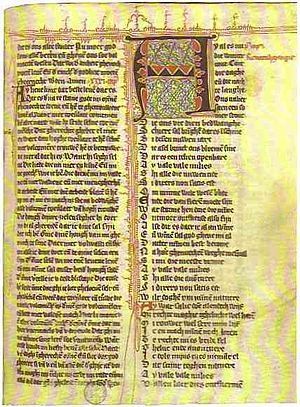
Het 1e strofische gedicht (lied) van Hadewijch: Ay al es nu die winter cout (Photo credit: Wikipedia)
Also known as Hadewijch of Brabat or Hadewijc of Brussels, Hadewych of Antwerp was a 13th century female poet and mystic who wrote in a Brabantian dialect of Dutch. She was possibly part of a community of beguines (lay Christians) and showed a great knowledge of literature and theology. She was known as a “minnemystik”, a mystic who focuses on “minne” or love.
Here’s the link to other Tuesday poems.








June 18, 2012
Flash Fiction Tuesday
It’s Flash Fiction Friday in New Zealand this week (22 June), so the Tuesday poets are getting a bit flash. There are a number of events around the country, and in Auckland there will be a prize-giving event in the Auckland Central City Library (Lorne Street, in the Whare Wānanga, Level 2, at 5-7 pm) where the national flash fiction competition winners will be announced and you can enjoy readings by guests Siobhan Harvey, Murray Edmonds, Vivienne Plumb, David Lyndon Brown, Leanne Radojkovich, Katharine Derrick, Penny Somerville and others. Wellingtonians are meeting at the Library bar in Courtenay Place at 6pm – I’m planning to be there.
More details of events in other places on the National Flash Fiction Day site and an interesting article on how to write flash fiction (very short stories) from the Guardian.
Here’s a particularly short piece of flash fiction I wrote a while ago – the aim of this one was to write a story in exactly 100 words (excluding the title). You can read more at the Tuesday poem site from midnight tonight.
Neighbour
My neighbour spies on me. I’ve seen his Roman blinds twitching. He doesn’t realise I know.
I try to make his life more interesting, rising at strange hours to meditate on the roof. Some days I practise the flute in a ball gown.
I built a tree house in the back garden so he could watch me carrying things up the ladder: fifty metres of tinsel, a papier-mâché crab.
I like to think of him taking notes, trying puzzle it all out, wondering if he should tell someone.
I hope I make him happy. I think I’m all he has.








May 28, 2012
Tuesday Poem – Paekakariki
In the garden of cats
the deserted lover
learns to purr again
& threads the sun around her neck
in a garland of golden oyster shells.
Violets grow quietly
dragonflies come to call
she smells lavender
listens to the sea.
Inside her shut shell
the deserted lover makes pearls
from the gritty bits.
Thinks: If I were a cat
I’d live off parakeets
& keep my love.
This is an old poem I wrote years ago after I’d been house-sitting for my friends Anna-Marie and Mary-Jane in Paekakariki – “the ridge where the parakeets perch”. It was summer and their cats and I spent a lot of time sitting about in the garden.
You can read the other Tuesday poems here.









